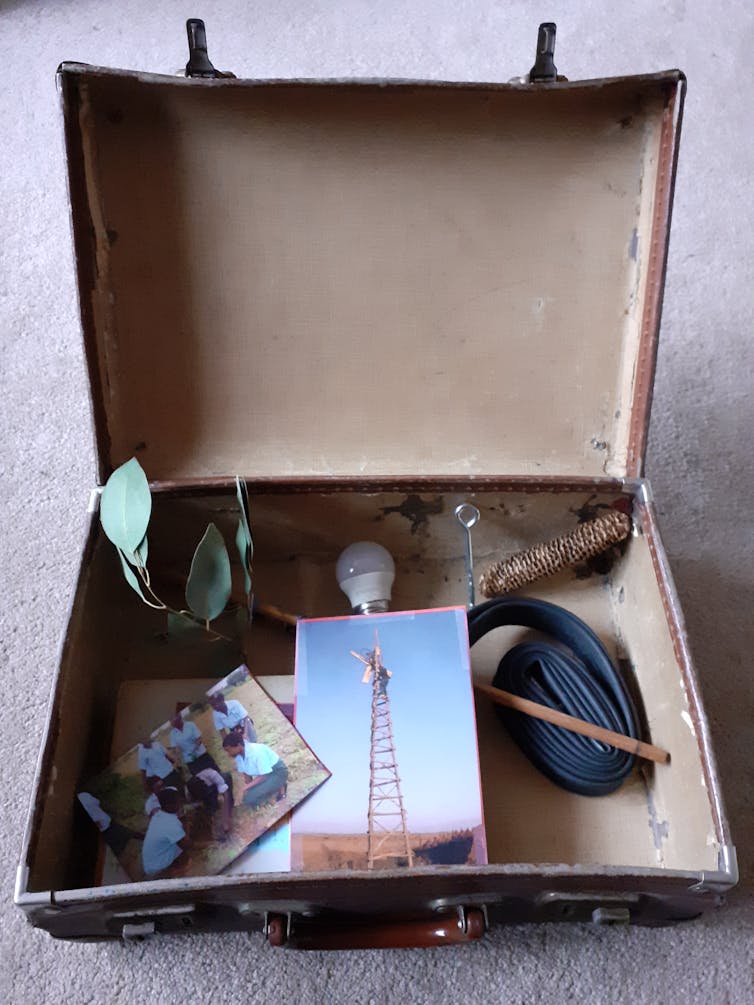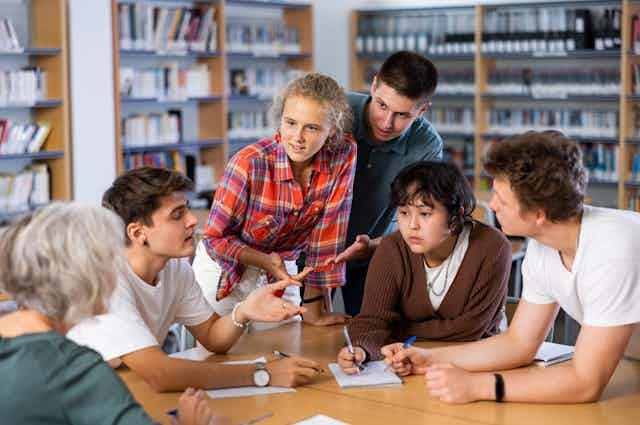Education is key to empowering young people to respond to climate change. It’s something that will reach into every aspect of their lives in complex ways. However, the national curriculum largely confines climate change to a few subjects, meaning teachers in other disciplines often feel out of their depth.
A survey carried out in England in 2021 found that 70% of the teachers surveyed, across all disciplines, felt they haven’t received any training at all for teaching climate change. The situation is fairly similar in countries such as the USA and Australia.
In particular, education on climate adaptation – the way people adjust to the impacts of climate change – may be particularly challenging for teachers. In general, issues such as climate refugees, the case for reparations to developing countries, or the need to prepare for food supply issues or extreme weather events are politically complex. Teachers may fear that teaching about these issues, which do not have easy solutions, may make their students anxious.
A focus on climate adaptation may also be seen as a distraction from educating on climate mitigation –preventing climate change from happening.
One way to make teaching about climate adaptation less potentially daunting for teachers is to draw on personal experience, particularly when conveyed through the creative arts. Our research in secondary schools and youth organisations has found that one effective way of doing this is to help young people to exchange their experiences, both among themselves and with communities most impacted by climate change.
For our recent project with colleague, director of the Institute for Social Justice Matthew Reason, we worked with young people in a UK secondary school and two youth clubs. The young people connected online with Nigerian students and a US-based climate podcaster to talk about their experiences of climate adaptation.
Listening to each other’s stories
The project allowed students to explore different perspectives and consider the relationships between different issues in a global system. For example, Nigerian students struggled with excessive heat, but also unseasonably cold weather that brought dangerous cold-season animals out all year round. Students’ stories of their own relatives in Pakistan, Turkey, Australia and other countries cast light on the importance of local knowledge in building community resilience to flooding or wildfires.
The UK students connected the impact of globalisation on climate change, such as international trade which generates enormous greenhouse gas emissions, to its effect on the local economy of their Yorkshire town. They discussed how locally owned shops were under pressure from chain stores.
All the young people in England went on to develop and share performances of climate adaptation stories. In seven small groups, the young people used what they learnt to create short storytelling performances using only props that could be packed into suitcases. They communicated how people are already experiencing the effects of climate change and what we can learn from how they are adapting.

The beauty of storytelling-led approaches to educating on complex issues is that every narrative is unique and complete. Stories contain elements drawn from social, moral, personal, technical and scientific spheres of knowledge.
Existing knowledge
This means that rather than teachers needing to acquire extensive expertise about climate adaptation, they can start by building upon knowledge that already exists within their students’ and their own lives.
The students’ learning about climate adaptation occurred as they also formed meaningful relationships with each other. This gave their stories the power and significance of the first-person witness.
The mutual learning environment helped students appreciate the gaps in their knowledge of each other’s environment. One Nigerian student was surprised by the UK students’ reports of floods and droughts, responding that they “learnt that the effects of climate change in Africa are little different from its effects in the UK”.
Learning through connection and stories also helped the students focus on climate adaptation in a way that avoided climate anxiety. One student in England said:
I think I’ve learned how to pick up on issues. Like how they can be solved. Looking at it more into kind of what can be done and the people around it. So I think now I’d look more into what can be done, and how can we solve it, more than like being upset about it.
Our surveys of the students found that they were much more likely to agree with the statement “I know about some things I could do or get involved with to tackle climate change or help people adapt to it” after they had completed the project.
Exploring a difficult, unbounded topic such as climate change through participatory storytelling provides young people with emotionally meaningful connections to it, and a way to contain and express their fears about the future.
Enhancing this with curious enquiry into the experiences of communities on elsewhere in the world can allow them to link their local experiences of climate adaptation to the global picture.

